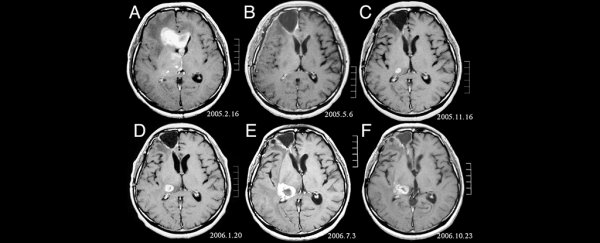As far as cancers go, one of the worst is a type of brain cancer called glioma - the disease has a five-year survival rate of just 5 percent, and no reliable method for early detection.
A giant study that pooled genetic data from tens of thousands of people could change that, finding more than a dozen new mutations for physicians to hunt for in an effort to identify who is at risk of developing glioma.
The results could end up boosting the chances of an early diagnosis, and saving lives in the process.
Together with researchers from the US and Europe, scientists from the Institute of Cancer Research in the UK carried out two studies on the human genome in an effort to spot differences that could result in cancer of the brain's glial cells.
Our central nervous system relies on neurons to do its 'thinking' work, but they're far from the only cell in the neighbourhood. For example, glial cells provide support for the neurons by insulating them, holding them in place, and helping them access nutrients.
But like a number of tissues in the body, changes in the genes inside these 'nanny' brain cells can cause them to grow out of control, prompting cancerous tumours to develop.
Glioma can be further broken down into categories, depending on the type of glial cell they started out as. Glioblastoma multiforme (GBM), for example, is a common form of brain cancer that begins as a type of glial cell called an astrocyte.
Tumours that grow into glioblastomas are particularly aggressive, killing around 95 percent of patients within five years.
GBM develops in around 3 out of every 100,000 people, mostly striking in those over the age of 60, and claiming approximately 13,000 lives in the US and 5,000 lives in the UK each year.
While many researchers have been looking for new and innovative ways to treat gliomas, early detection has often been more accidental than intentional.
An Ohio State University study conducted in 2015 identified interactions between a pair of proteins and the newly developed tumour which could lead to a test that allows oncologists to diagnose a tumour as much as five years before symptoms appear.
But by identifying the genes that increase the risk of developing glioma later in life, researchers could potentially produce a program of diagnosis and quick treatment that might prevent tumours from growing in the first place.
This recent study didn't stop at scanning the genome; it also analysed over 30,000 people included in a number of previous studies on GBM and non-GBM cancers, producing the largest ever study into brain cancer research.
All up, the research compared 12,496 cases of glioma with 18,190 people who didn't have the cancer, finding 13 new locations on the genome which – if changed – could lead to glioma.
"The changes in the way we think about glioma could be quite fundamental," says Richard Houlston from the Institute of Cancer Research.
"So, for example, what we thought of as two related sub-types of the disease turn out to have quite different genetic causes which may require different approaches to treatment."
In total, researchers now have strong evidence for 26 locations on the genome that individually increase the risk of developing a form of glioma, in one case by up to 15 percent.
That might not seem like a lot, but when the odds are stacked against those with a metastatic brain tumour, every clue could make the difference between life and death.
"Understanding the genetics of glioma in such detail allows us to start thinking about ways of identifying people at high inherited risk, and will open up a search for new treatments that exploit our new knowledge of the biology of the disease," said Houlston.
Combining past studies to increase the pool of data is a useful way to spot small differences which have otherwise been missed.
Hopefully this is one record we'll see broken some time soon.
This research was published in Nature.
